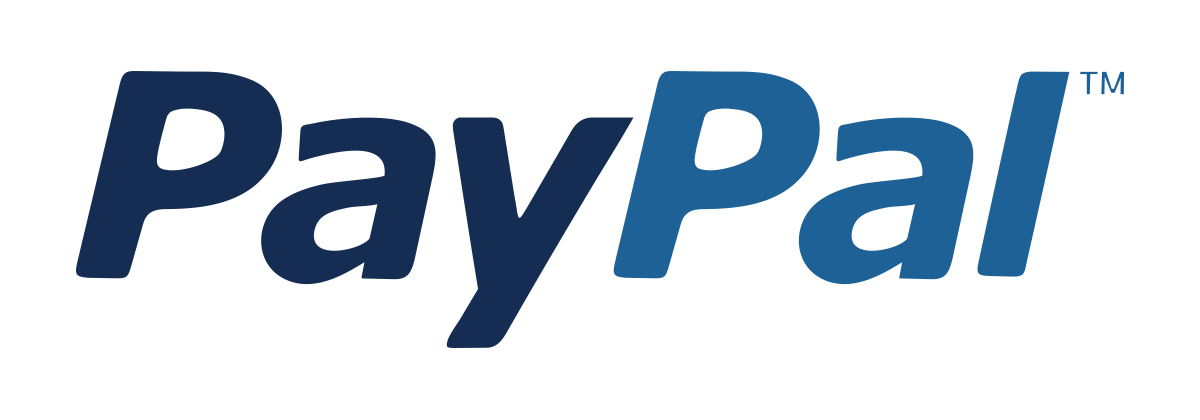Trustworthy Robotics
Design Safe, Ethical, and Reliable Robots Guided by AI and Human-Centric Principles Price Match Guarantee
Full Lifetime Access
Access on any Device
Technical Support
Secure Checkout
Course Completion Certificate
Price Match Guarantee
Full Lifetime Access
Access on any Device
Technical Support
Secure Checkout
Course Completion Certificate
 97% Started a new career
BUY THIS COURSE (
97% Started a new career
BUY THIS COURSE (GBP 12 GBP 29 )-
 86% Got a pay increase and promotion
86% Got a pay increase and promotion
Students also bought -
-

- Brain-Computer Interfaces (BCI)
- 10 Hours
- GBP 12
- 10 Learners
-
- Digital Twins and Simulation
- 10 Hours
- GBP 12
- 10 Learners
-

- Zero Trust Security
- 10 Hours
- GBP 12
- 10 Learners

Trustworthy Robotics sits at the intersection of robotics engineering, artificial intelligence, human–computer interaction, ethics, and safety design. As robots become more autonomous and increasingly integrated into everyday life — from healthcare and logistics to elder care, manufacturing, and smart cities — ensuring trust, transparency, and accountability is no longer optional. Robots must behave reliably, make safe decisions, interact respectfully with humans, and comply with global ethical standards.
The Trustworthy Robotics Course by Uplatz provides a comprehensive and practical foundation for building robotic systems that can be trusted in real-world environments. You will explore how to design robots that are safe, explainable, fair, predictable, and aligned with human values. From robot perception and navigation to ethical risk analysis, regulatory frameworks, and AI safety engineering, this course equips you with the technical and human-centred knowledge required to create responsible robotic solutions.
Through hands-on exercises using ROS (Robot Operating System), Gazebo, Python, and AI algorithms, you will gain the skills to simulate, evaluate, and implement trustworthy decision-making in robotic systems.
🔍 What Is Trustworthy Robotics?
Trustworthy Robotics is an interdisciplinary domain that ensures robotic systems are not only technically proficient but also safe, ethical, and dependable in their behaviour. It integrates:
-
Robotics Engineering (sensing, actuation, control systems)
-
Artificial Intelligence & Machine Learning
-
Safety Engineering & Risk Management
-
Ethics, Fairness, and Human Values
-
Regulatory Standards & Compliance
A trustworthy robot is one that:
-
Makes transparent and explainable decisions
-
Behaves consistently and predictably
-
Minimises harm and maximises safety
-
Respects human autonomy and privacy
-
Operates reliably under uncertainty
-
Aligns with legal, ethical, and social expectations
As robotics rapidly evolves, the ability to design systems that humans can trust has become a top priority across industries.
⚙️ How Trustworthy Robotics Works
Ensuring trustworthiness requires combining engineering principles with ethical frameworks and AI safety techniques. This involves:
1. Robot Perception
Robots gather information through sensors such as LiDAR, RGB cameras, IMUs, depth cameras, and tactile sensors.
2. Motion Planning & Control
Algorithms for navigation, path planning, collision avoidance, and movement execution ensure safe physical behaviour.
3. AI Reasoning & Decision-Making
Robots use machine learning, probabilistic reasoning, reinforcement learning, and rule-based logic to make context-aware decisions.
4. Ethical and Safety Frameworks
Standards such as:
-
IEEE 7007 – Ethically Aligned Design
-
ISO 13482 – Safety for Personal Care Robots
-
ISO 10218 – Industrial Robot Safety
-
EU AI Act – Risk-Based Compliance
These provide guidelines for fairness, transparency, human oversight, and safety assurance.
5. Human–Robot Interaction (HRI)
Robots must collaborate smoothly with humans, understand social cues, and communicate intentions clearly.
6. Simulation & Testing
Tools like ROS, Gazebo, Webots, and RViz ensure robots are tested in safe simulated environments before real-world deployment.
This course walks you through every step of this workflow to ensure you can build robots that operate safely and ethically.
🏭 How Trustworthy Robotics Is Used in the Industry
Trustworthy Robotics is critical across multiple domains where robots interact with people, make autonomous decisions, or handle sensitive data.
1. Healthcare & Elder Care
Assistive robots for rehabilitation, mobility support, medication management, and monitoring vulnerable individuals.
2. Manufacturing & Industrial Automation
Collaborative robots (cobots) that work alongside humans safely and predictably.
3. Autonomous Vehicles & Drones
Safety-critical decision-making for navigation, obstacle avoidance, and compliance with regulations.
4. Public Spaces & Service Robots
Customer service robots, delivery robots, and cleaning robots used in airports, malls, hospitals, and universities.
5. Defence & Search-and-Rescue
Ensuring high reliability and ethical decision-making in critical missions.
6. Agriculture & Environmental Robotics
Field robots that perform tasks autonomously while avoiding harm to people, animals, and ecosystems.
7. Smart Homes & Personal Robotics
Household robots performing everyday tasks while respecting privacy and safety.
Industries worldwide rely on trustworthy robotics to build systems that can be certified, deployed, and adopted confidently.
🌟 Benefits of Learning Trustworthy Robotics
Studying trustworthy robotics offers valuable advantages:
-
Highly in-demand skillset as industries adopt autonomous systems.
-
Foundational understanding of ethical AI, safety engineering, and responsible robotics standards.
-
Hands-on experience with ROS, Gazebo, and Python-based robotics libraries.
-
Ability to design robots that are safe and compliant with global regulations.
-
Career opportunities in robotics engineering, AI safety, HRI design, automation, and research.
-
Interdisciplinary expertise that combines engineering, ethics, and human-centred design.
-
Future-proof competencies in transparency, explainability, and trustworthy AI systems.
Learning trustworthy robotics positions you at the forefront of ethical and safe automation — a rapidly growing field.
📘 What You’ll Learn in This Course
(Full syllabus lives in its own tab — this is a high-level overview.)
You will explore:
-
Fundamentals of robotics engineering
-
Robot sensing and environment perception
-
Motion control and path-planning
-
AI reasoning and decision-making in robots
-
Explainable AI (XAI) methods for transparency
-
Human–robot interaction and safety protocols
-
Ethical frameworks and robotic governance
-
Global standards: IEEE 7007, ISO 13482, ISO 10218
-
Simulation of robots in ROS, Gazebo, and RViz
-
Real-world case studies of ethical failures and safety incidents
-
Capstone project: build a trustworthy robotic system with safe decision-making
🧠 How to Use This Course Effectively
To get the most out of this self-paced learning experience:
-
Start with core robotics concepts: sensors, actuators, control systems.
-
Understand ethical, legal, and social considerations in robotics design.
-
Learn robot perception algorithms (image processing, SLAM, depth sensing).
-
Implement safe navigation and decision-making algorithms in Python.
-
Simulate robotic interactions in ROS and Gazebo.
-
Evaluate models using fairness, safety, and reliability metrics.
-
Build your capstone system to demonstrate trustworthy robot behaviour.
-
Review challenging modules and iterate on your robotic simulations.
👩💻 Who Should Take This Course
This course is ideal for:
-
Robotics Engineers and Automation Developers
-
AI and Machine Learning Engineers
-
Mechatronics and Electrical Engineering Students
-
Researchers in Human–Robot Interaction (HRI)
-
Safety Engineers and Compliance Professionals
-
Developers building autonomous systems
-
Anyone interested in ethical and safe robotics
No prior robotics experience is required; basic Python knowledge is helpful.
🚀 Final Takeaway
Robots are becoming collaborators, assistants, caregivers, and critical decision-makers. To ensure they contribute positively to society, robotics professionals must design systems that are ethical, transparent, safe, and trustworthy.
The Uplatz Trustworthy Robotics course provides the engineering, ethical, and AI knowledge you need to build confident, reliable robotic systems. By the end of the course, you will know how to design, analyse, simulate, and deploy robots that meet global safety standards — balancing innovation with responsibility.
-
Understand the principles of ethical and safe robotics.
-
Learn robotic system architecture and components.
-
Apply AI to perception, motion, and decision-making.
-
Develop algorithms that ensure predictable robot behaviour.
-
Integrate explainability and transparency in robotic AI.
-
Design robots compliant with safety standards and regulations.
-
Simulate human–robot interactions using ROS and Gazebo.
-
Address fairness, accountability, and bias in autonomous systems.
-
Explore certification frameworks for trustworthy AI and robotics.
-
Prepare for careers in robotics, automation, and AI safety engineering.
Course Syllabus
Module 1: Introduction to Robotics and Ethical AI Principles
Module 2: Robot Kinematics, Dynamics, and Control Systems
Module 3: AI and Machine Learning in Robotics
Module 4: Safety and Reliability Frameworks for Autonomous Systems
Module 5: Ethical and Legal Dimensions of Robotic Design
Module 6: Explainability and Transparency in Robotic Decision-Making
Module 7: Tools and Frameworks – ROS, Gazebo, and Python for Robotics
Module 8: Human–Robot Interaction (HRI) Design and Testing
Module 9: Standards and Compliance – IEEE 7007, ISO 13482
Module 10: Capstone Project – Design a Trustworthy Robotic System
Upon successful completion, learners receive a Certificate of Completion from Uplatz, validating their expertise in Trustworthy Robotics. This Uplatz certification demonstrates your ability to design AI-driven robots that are safe, transparent, and ethically aligned with human values.
The certification aligns with the growing demand for ethical AI and responsible automation in sectors such as manufacturing, defense, healthcare, and service robotics.
Holding this certification establishes you as a robotics professional capable of developing systems that earn public trust — through safety assurance, human-centred design, and regulatory compliance.
With robots playing increasingly crucial roles in society, trustworthy robotics engineers are essential for ensuring their safe and ethical deployment. Completing this course from Uplatz prepares you for positions such as:
-
Robotics Engineer (Safety and Ethics)
-
AI Robotics Developer
-
Automation Ethics Specialist
-
Human–Robot Interaction Designer
-
AI Safety Researcher
Professionals in this field typically earn between $110,000 and $200,000 per year, depending on expertise and sector.
Career opportunities span robotics companies, AI research labs, autonomous vehicle firms, and ethical AI policy organisations, where the focus is on transparency, safety, and public confidence in autonomous systems.
-
What is Trustworthy Robotics?
It is the practice of designing robotic systems that are ethical, safe, and reliable for human use. -
Why is trust important in robotics?
Because users must rely on robots to make decisions that affect safety, privacy, and fairness. -
What are key principles of trustworthy robotics?
Transparency, accountability, safety, fairness, and explainability. -
What is explainable AI (XAI) in robotics?
It enables robots to justify their decisions in a human-understandable way. -
What are major ethical issues in robotics?
Privacy invasion, bias in AI, job displacement, and misuse of automation. -
What is the IEEE 7007 standard?
A framework for ethically aligned design of autonomous and intelligent systems. -
How does ROS help in developing trustworthy robots?
It allows modular, transparent, and reproducible robotic programming. -
What are methods for ensuring robot safety?
Redundancy, real-time monitoring, fallback mechanisms, and testing in simulation. -
How can bias enter robotic systems?
Through training data, flawed algorithms, or unrepresentative testing environments. -
What industries require trustworthy robotics?
Healthcare, defense, manufacturing, logistics, and autonomous transport.









